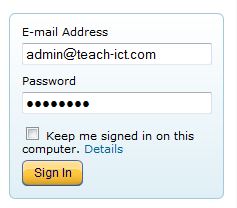6. Indirect sources
Indirect sources means data has been collected for a particular reason but then that data is used for something else.
Example 1: Online shop
 An online shop stores your email address and details of items you have bought. They use this data to help with their stock control and to send you an order confirmation. This is direct or original source data.
An online shop stores your email address and details of items you have bought. They use this data to help with their stock control and to send you an order confirmation. This is direct or original source data.
But then they might sell your data (email address) to a similar company (with your permission).
This second company might then email you with a list of related items you might be interested in.
For example, you buy a computer game from one online company, then an email arrives from a different company asking if you would like to buy a strategy book for the game.
Example 2: Weather data
 Data loggers are set up all over the country to measure local weather conditions.
Data loggers are set up all over the country to measure local weather conditions.
All this data is gathered together by the 'Met office' to allow weather forecasts to be made. (Direct or original source data)
But this 'data set' may also be purchased by a local business who wants to see how sales of their ice-cream relates to the weather.
This information is used to plan ice-cream production ahead of time. (indirect data)
Example 3: Electoral Register
By law, all residents must provide details of who is living in the house/flat, how old they are and their gender. The purpose of this data gathering to allow local authorities to handle voting in political elections. (direct or original source data)
But (with the person's permission) some of the list can be sold to commercial firms such as a marketing company planning a new mail-shot campaign. (indirect data).
challenge see if you can find out one extra fact on this topic that we haven't already told you
Click on this link: Cross Selling
challenge see if you can find out one extra fact on this topic that we haven't already told you
Click on this link: Secondary Data
